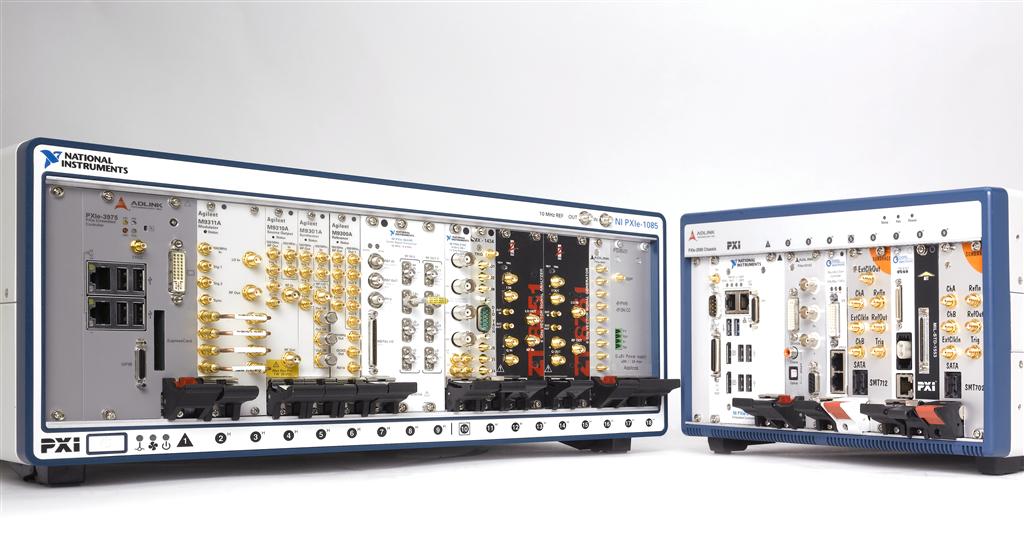Description
The NI SCC-SG02 Strain Gage Module, with part number 777459-14, is designed for Quarter-Bridge configurations and features a resistance of 350 Ω. It has two differential channels that are equipped with an integrated 1.6 kHz lowpass filter to ensure accurate measurements in noisy environments.
Each channel includes an integrated 2.5 V excitation source and one 350 Ω quarter-bridge completion resistor, with the resistors being socketed for easy replacement when necessary. The module can process analog signals ranging from -100 to +100 mV and has overvoltage protection on each channel.
When powered on, the SCC-SG02 operates with an input impedance of 10 MΩ and an input noise level of 1 µVrms at a bandwidth of 1.6 kHz. It consumes 143 mW of analog power and draws 42 mA of current at +5 VDC. Despite its obsolete status, the module is still available for purchase and repairs.
| Specification | Detail |
|---|---|
| Part Number | 777459-14 |
| Product Name | NI SCC-SG02 Strain Gage Module |
| Configuration | Quarter-Bridge |
| Resistance | 350 Ω |
| Channels | Two differential channels |
| Filter | 1.6 kHz lowpass filter |
| Excitation Source | Integrated 2.5 V |
| Completion Resistor | One 350 Ω quarter-bridge completion resistor per channel |
| Resistor Type | Socketed resistors |
| Signal Range | -100 to +100 mV |
| Overvoltage Protection | Integrated on each channel |
| Input Impedance (Powered-On) | 10 MΩ |
| Input Noise (1.6 kHz Bandwidth) | 1 µVrms |
| Analog Power Consumption | 143 mW |
| Current Draw at +5 VDC | 42 mA |
Q1: What features does the NI SCC-SG02 Strain Gage Module offer for ensuring accurate measurements in noisy environments and for what type of bridge configuration is it designed?
A1: The NI SCC-SG02 Strain Gage Module with part number 777459-14 is designed for Quarter-Bridge configurations, and its differential channels feature an integrated 1.6 kHz lowpass filter, a 2.5 V excitation source, a 350 Ω quarter-bridge completion resistor, and overvoltage protection.
Q2: What type of bridge configuration is the NI SCC-SG02 Strain Gage Module with part number 777459-14 designed for, and what are the key features of its differential channels?
A2: The NI SCC-SG02 Strain Gage Module offers two differential channels with integrated 1.6 kHz lowpass filters and a 350 Ω quarter-bridge completion resistor to ensure accurate measurements in noisy environments for quarter-bridge configurations.
Q3: What is the purpose of the 1.6 kHz lowpass filter integrated into the NI SCC-SG02 Strain Gage Module, and how does it contribute to the module’s performance in noisy environments?
A3: The NI SCC-SG02 Strain Gage Module, part number 777459-14, is tailored for Quarter-Bridge configurations and excels in noisy environments due to its key features, which include a resistance of 350 Ω, two differential channels with an integrated 1.6 kHz lowpass filter, an integrated 2.5 V excitation source, and a 350 Ω quarter-bridge completion resistor that is socketed for easy replacement. Additionally, it supports analog signal
Q4: What are the key features and specifications of the NI SCC-SG02 Strain Gage Module with part number 777459-14, and how do they contribute to its performance in Quarter-Bridge configurations and noisy environments?
A4: The NI SCC-SG02 Strain Gage Module is designed for Quarter-Bridge configurations and ensures accurate measurements in noisy environments through its two differential channels equipped with an integrated 1.6 kHz lowpass filter.
Q5: What features does the NI SCC-SG02 Strain Gage Module offer for dealing with noisy environments and ensuring accurate quarter-bridge configuration measurements?
A5: The 1.6 kHz lowpass filter integrated into the NI SCC-SG02 Strain Gage Module is designed to remove high-frequency noise from the signal, ensuring accurate strain measurements by allowing only frequencies below 1.6 kHz to pass through, which is particularly beneficial in noisy industrial or electrical environments where such interference is common.


